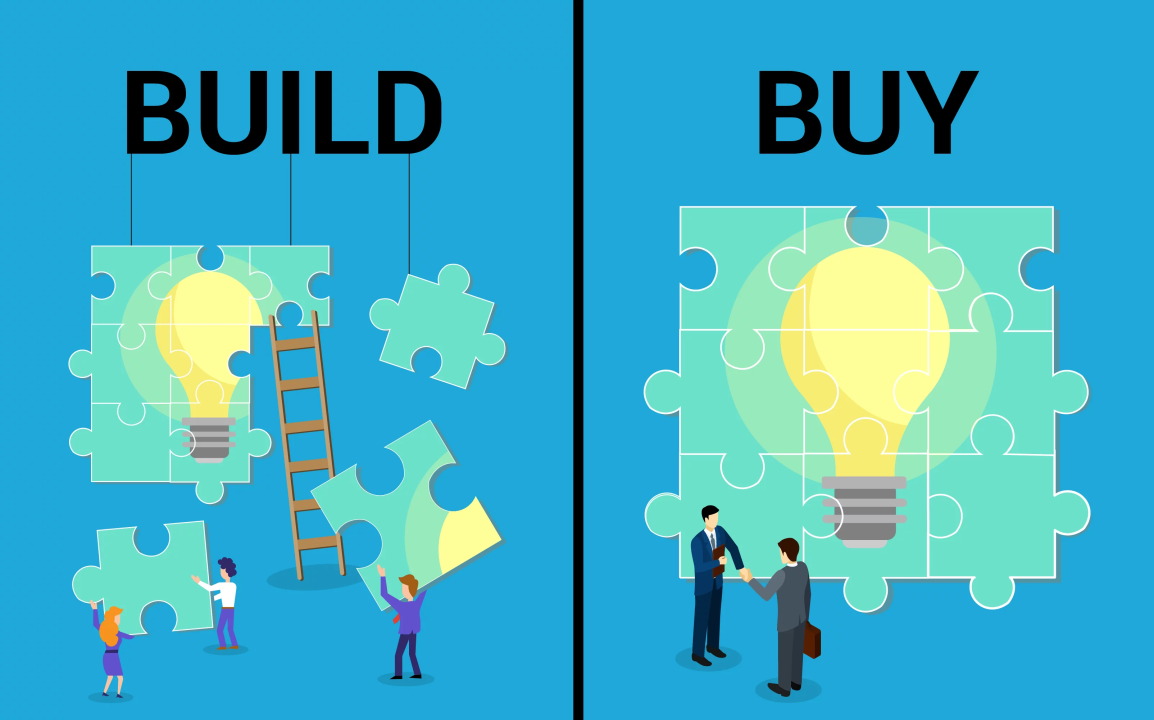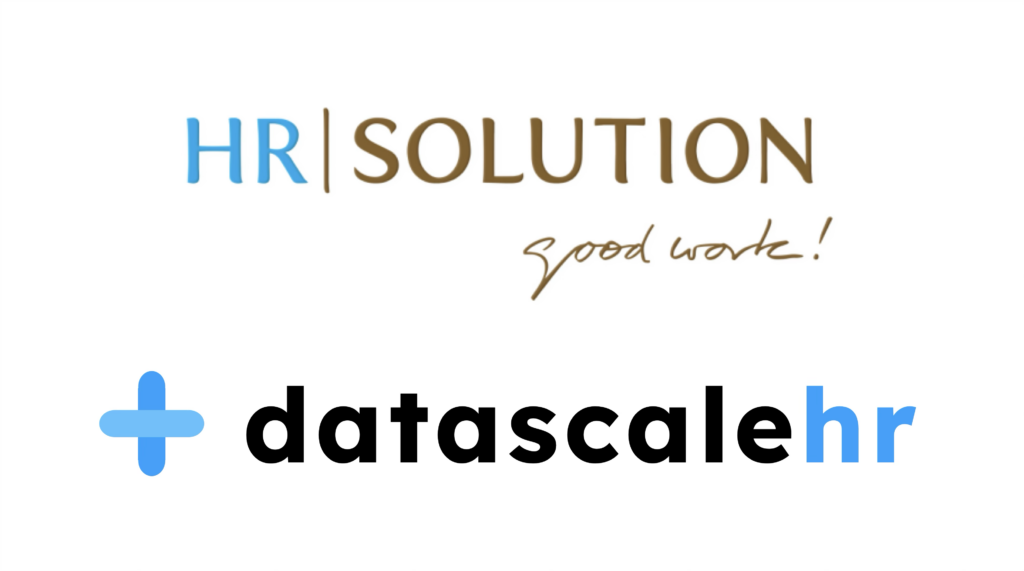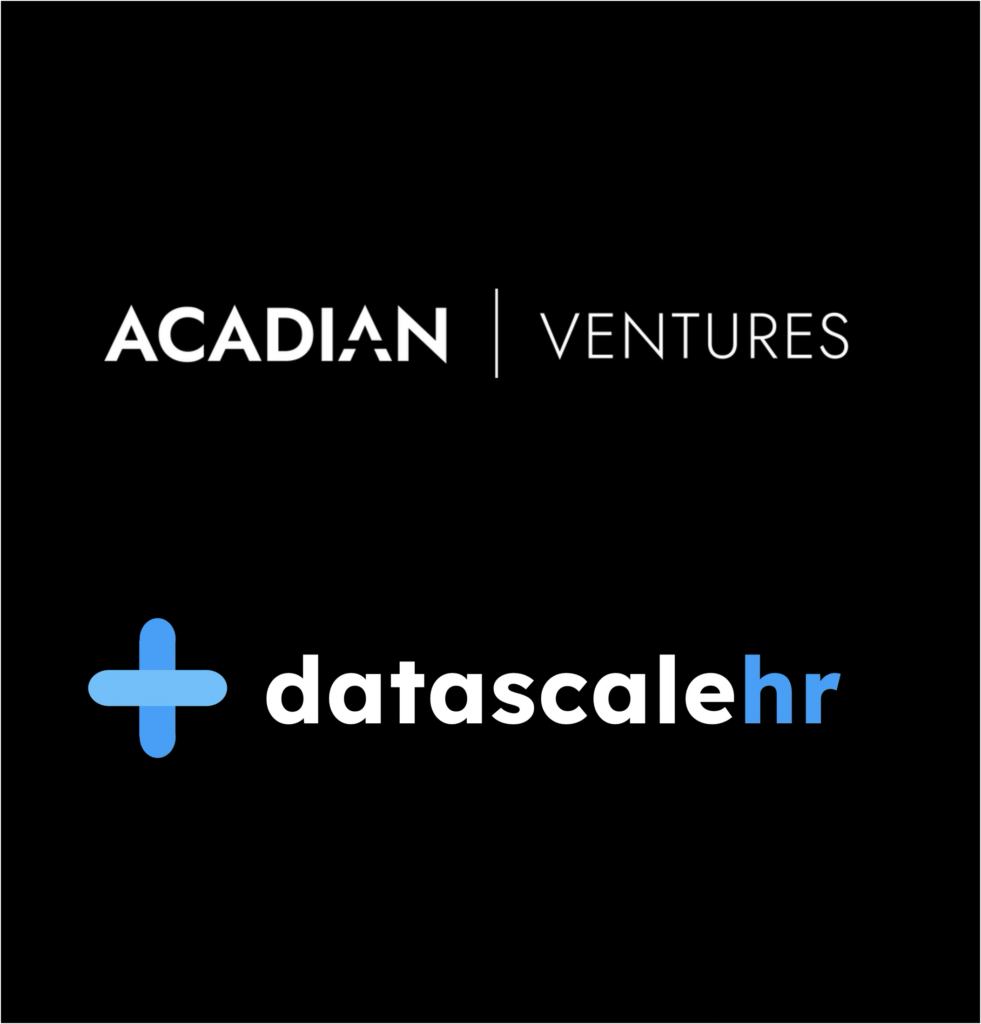To build or to buy?
Right now, this is the question many EORs and MCPs are asking themselves as the need for a payroll data management platform becomes increasingly clear. While EORs look to broaden their service offerings, retain customers, and increase enterprise value, MCPs seek faster implementations, greater profitability, and better growth and upsell opportunities.
To accomplish these goals and to scale efficiently, both EORs and MCPs recognize the need to do the same thing:
Turn the complexity of global payroll data processing into a streamlined, secure, and compliant operation.
The fastest, most effective, and profitable way to do this is via a payroll data management platform. But should you build one or buy one?
At datascalehr, we believe building one in-house is a losing game.
In this article, we’ll investigate why this is the case and why fortune favors the EORs and MCPs that buy a payroll data management platform—especially those that buy sooner rather than later.
Déjà Vu: We’ve Been Down This Road Before
Of course, the build vs. buy dilemma isn’t new. It’s come up time and time again with just about every innovative back-end technology that’s ever hit the market.
In the 1990s, organizations were debating whether to build or buy an ERP. In the 2000s, it was CRMs. And in the 2010s, it was a multitude of back-end tech—from supply chain management software and e-commerce platforms to content management systems and HRMs.
In these cases, organizations eventually made the same decision:
They chose to buy.
Some took the long way of getting there—first attempting to build and perhaps even using their own homegrown solutions for a period of time. But nonetheless, they ended up buying. Today, no business thinks twice about it—buying the aforementioned back-end technologies is a given.
We believe the same story will play out with payroll data management because, as with the back-end technologies that’ve come before it—we’ve reached a tipping point:
Payroll data management platforms are leading to significant improvements in efficiency, scalability, and cost-effectiveness for businesses, and it’s becoming impossible to ignore. Innovative organizations realize new levels of growth and scale are actually hindered by owning this technology, and that they’re better off taking the resources they would have used to build and maintain in-house platforms, and reallocating them to their revenue-generating products and services instead.
For EORs and MCPs, it’s a transformation from full-stack ownership to differentiated-stack ownership, where they strategically own their differentiation capabilities and buy commodity ones.
And payroll data management is, undoubtedly, a commodity capability.
Payroll Data Management: A Commodity Capability
While mission critical to operational margins, payroll data management adds no differentiation or competitive advantage to the customer-facing products of EORs and MCPs.
It’s an internal process advantage, and internal processes are not positive business differentiators—yet they could be negative ones.
Take the CRM, for example:
Building and maintaining a CRM in-house isn’t just painstakingly hard, slow, and costly for companies—it also adds complexity and technical debt, which lead to inefficiencies and ineffectiveness in the very area it’s supposed to help in: managing customer relationships. Building and owning one adds no positive business differentiators, but it leads to negative ones: disorganized and inconsistent comms with prospects, missed growth opportunities, customer churn, low employee morale, etc.
And then what happens? The organization decides to buy a third-party CRM, undergoes a lengthy rip and replace process, and is years behind their competitors who opted to buy from the get-go.
This is why no one builds their own CRM anymore. It’s a commodity capability. All the technology they need is readily available from a number of vendors, and there’s absolutely zero advantage of building their own when they can get up and running from the start with a tried and true solution.
This is what’s happening with payroll data management, and the EORs and MCPs that buy now will have a significant head-start against those that choose to build.
A Lot of Risk, and for What Reward? The Dangers of Building In-House
We’re not here to say you can’t build a payroll data management platform—you absolutely can.
In fact, many EORs and MCPs already have. Yet they all face the same challenges: the tech is slow and undifferentiated, it’s taking months to onboard new clients, and they’re hiring more and more payroll admins to do manual work. In addition to the challenges, there are legitimate risks of building such a solution in-house.
These are the most salient:
Uncontrollable Costs
When was the last time an infrastructure project came in on time and on budget? We’ll answer that—never. Development of a payroll data management platform requires ~75% of your R&D spend. Layer on top the time and costs required to properly maintain the platform, along with ongoing enhancements and frequent upgrades and overhauls, and scalability quickly becomes cost-prohibitive.
Compliance = Liability
Payroll engines are a liability—they’re a repository for compliance rules with short lifespans (3 years max). The tech is pure debt. Payroll data is a reflection of this phenomenon. Owning payroll data management assets, therefore, provides no strategic value and delivers no business advantage. The only value is in the capability. It’s the same reason Uber doesn’t own any cars—they’re too much of a liability.
Data Security
Manual processes on in-house platforms are generally not secure or compliant, creating a severe risk of breaches and cyber threats.
Loss of Focus
Building in-house dilutes focus from the core offerings of your business. It’s like if a Formula One driver pulled into the pit lane, got out of the car, and insisted he change his own tires. Everyone on his team would be confused, he’d likely do it wrong, and he’d undoubtedly become irrelevant in what actually matters: the race. There’s no advantage to being the racecar driver and the pit crew. Plus, a non-growth driver like payroll data management is unlikely to be prioritized in the long-term, so even if you build it today, you run the risk of it becoming obsolete or ineffective in the very near future.
Lower Valuations
Payroll engines and the associated data management require massive scale to be considered as assets. Payroll-engine businesses generate 3–5x lower valuations than product-focused companies. In effect, by investing in these back-end capabilities, you’re not increasing your valuation—you’re potentially diluting it.
For example: UKG acquired immedis (0 payroll engines) for 10x+ ARR, while EORs and HCMs like Remote and Bob (both with 0 payroll engines) raised capital at 20–40x ARR. On the other hand, Deel acquired PayGroup (7 payroll engines) and PaySpace (44 payroll engines) for 3x ARR and 4x ARR, respectively.
The reality is, companies acquiring payroll engines won’t know whether or not they’ve generated ROI on these investments for 10+ years.
It’s hard
While any problem worth solving is hard, payroll data is a special kind of hard: Its complexity stems from the sheer scale of the use-cases to be solved and their idiosyncratic, undocumented nature.
Example: What do you do with a blank field received from a CSV file for CAR_ALLOWANCE that is backdated 3 months and extends until some date in the future, partially overlapping with another instance of the same field with a value of USD 500.00 to be paid in Euros?
There is no end to such undocumented rules just waiting to break your APIs and manicured front-end products.
A Better Bet: The Advantages of Buying a Payroll Data Management Platform
Some EORs and MCPs are already reaping the rewards—like scaling operations and profitably managing complex payroll processing—that come with buying a payroll data management platform.
Additional advantages of buying include:
Knowable Costs
Same-day implementations and instant payroll reconciliations at ~25% of your R&D spend without any maintenance necessary, plus the confidence that comes with knowing you have a commercial software that can scale with your business.
Enhanced Security and Compliance
Commercial platforms adhere to the latest security standards and practices, offering robust protection against data breaches and cyber threats.
Advanced Features
Third-party platforms are incentivized to continuously improve their products and stay on the cutting-edge—it’s their #1 focus and priority.
More Focus
With no resources allocated to building and maintaining complex payroll data management, you’re able to continue doing the things directly tied to your revenue and valuation: innovating on customer-facing products, capturing market share, and becoming an industry leader.
Higher Valuation
As alluded to before, product-focused companies generate 3–5x higher valuations than payroll-engine businesses.
What Payroll Looks Like With datascalehr, the AI-Native Payroll Data Management Platform
datascalehr revolutionizes payroll data management with our AI-native platform, designed to connect HR data sources and local payroll engines.
It provides an equivalent level of control you’d expect if you owned payroll assets but preserves the leverage you get from letting in-country providers do what they do better than anyone: provide local compliance.
By offering seamless, same-day connectivity between any data source and any payroll engine across the world, our platform eradicates the need for extensive R&D efforts, guarantees synchronization and reconciliation of all data sources, and ensures compliance across jurisdictions.
This is made possible in large part due to KMod™, datascalehr’s brain and core. It’s a pre-trained AI model derived from proprietary Machine Learning algorithms, as well as 30 years of global payroll expertise combined with the latest Large Language Models. It identifies and stores relationships, validations, and transformations between data fields and datasets from across the world, domains, and systems.
With it, our clients are achieving global data transparency, security, and efficiency, transforming complex data management into a streamlined process. As a result, they’re efficiently and profitably scaling their businesses and making operational excellence a reality.
“In the old days, you’d have to modify the data, translate it, transform it…datascalehr removes all those steps for us and does it automatically,” says Warren Perlman, CTO at Atlas. “This technology enhances our service delivery and significantly reduces our operational complexity.”
We could go on, but as they say, the proof is in the pudding. Here are some hard-to-believe yet very real performance metrics from our clients:
- 10x faster daily payroll operations
- 40x faster payroll implementation (sales to cash)
- 240x faster client provisioning and setup
- 4x faster time-to-productivity for new payroll admins
Big claims, we know—and we’d be skeptical too.
So if you want to see it for yourself, we can simulate a full client lifecycle from discovery to a fully-reconciled payroll, all on the first call.






